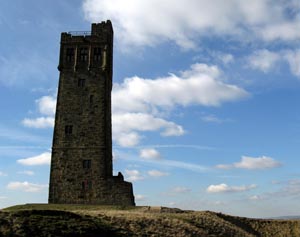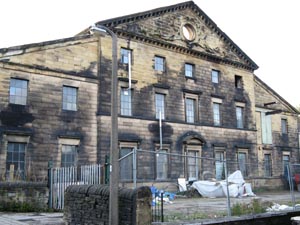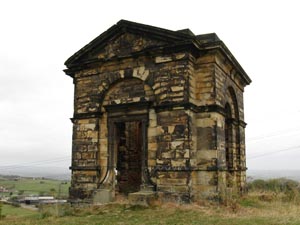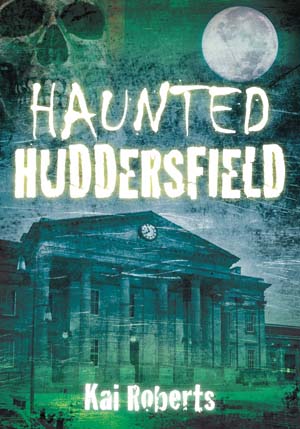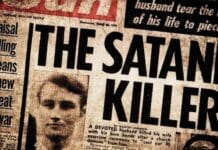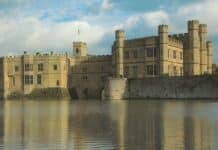Huddersfield is one of West Yorkshire’s most haunted places, says KAI ROBERTS
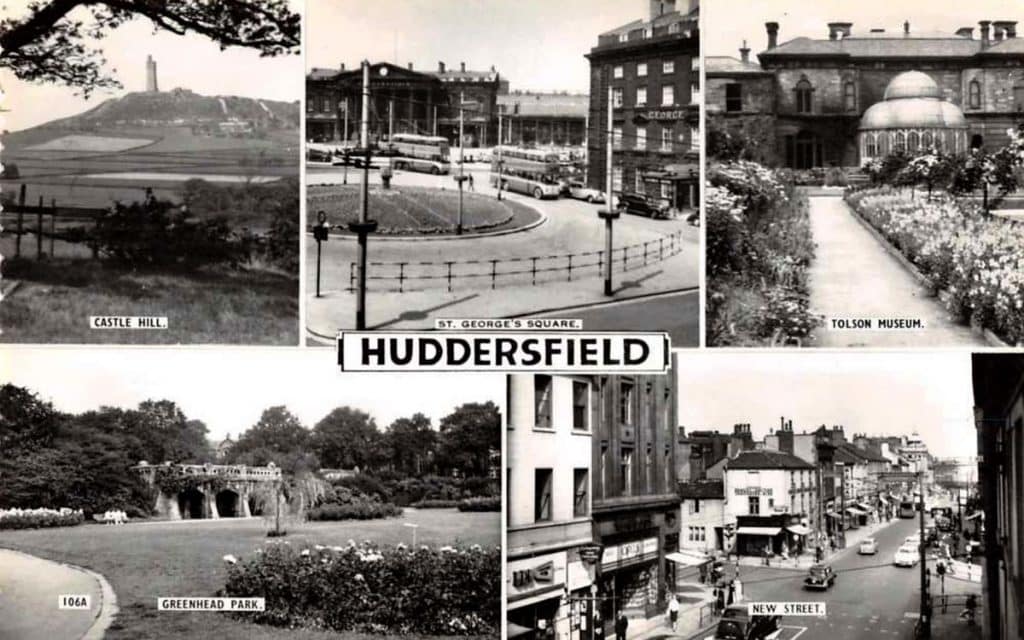
Huddersfield Train Station, St. George’s Square
A magnificent example of Victorian municipal architecture—the poet John Betjeman described Huddersfield station as “a stately home with trains”—but even this beautiful building has its dark side: it is haunted by the ghost of a porter named Jonah Marr.
Despised by his fellows for his ingratiating attitude, Marr was always able to wheedle larger tips than any other porter; thus, one day when he fell on the tracks—breaking both his legs—his colleagues were slow to come to his aid.
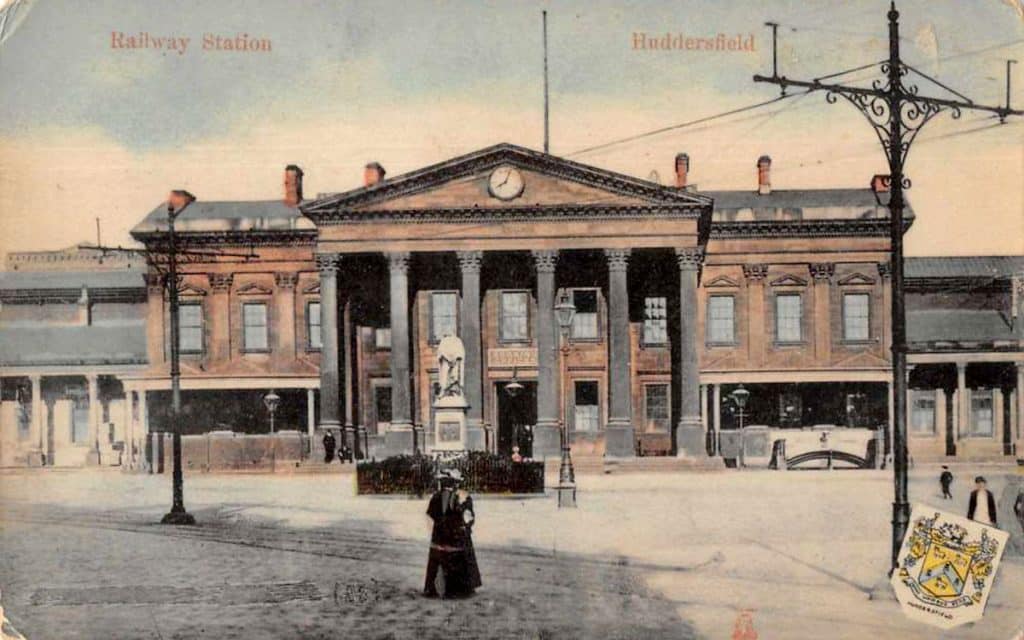
Marr’s legs never set properly: he was unable to return to work and died shortly thereafter. Around 11:25am—said to be the time of Marr’s accident—staff at the station today report the sound of disembodied, malevolent laughter proceeding the sensation of being nipped or pushed. Meanwhile, the ghost of a crooked man pushing luggage has been witnessed in one of the adjacent pubs.
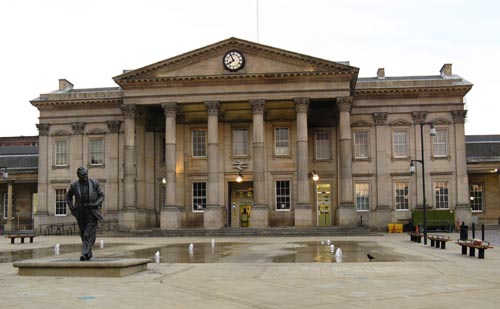
The Lawrence Batley Theatre, Queens Street
A cherished local theatre and arts centre, the Lawrence Batley Theatre was originally built in 1819 as a Methodist chapel and at one point it was the largest Weslyan Mission in the world, with a capacity of over 100. The undercroft—now the Cellar Theatre—served as a crypt for the chapel between 1819 and 1855.
84 bodies were interred here and forgotten about until the 1970s, when it they were exhumed with great care and secrecy lest infectious diseases such tuberculosis or typhoid had survived amongst the remains.
Needless to say, staff at the theatre have reported a great deal of strange phenomena from the former crypt: locked doors open of their own accord; the house-lights flash on and off even though the control desk is unmanned; and an incongruous figure in dapper Victorian garb is sometimes seen walking through the corridors long after the building has closed for the night.
The Zetland Hotel, Queensgate
Located on the corner of Zetland Street and Queensgate—opposite the entrance to the University of Huddersfield—the Zetland Hotel is today primarily known as a student bar and the establishment changes its name with dizzying regularity.
The premises were originally built in 1847; and from 1861 till 1901 they neighboured the armoury of the 2nd West Yorkshire Rifle Volunteers.
A former barman at the pub recalled that during the 1950s the landlady of the Zetland—known affectionately as “Mummy”—often reported encountering the unhappy ghost of a young soldier in the cellars of the pub.
Several decades later, in 1996, staff claimed to have experienced persistent poltergeist activity in the building: they found ashtrays overturned; chairs mysterious stacked on the stairs; and often heard unearthly noises after closing time. Significantly, perhaps, these witnesses were unaware of the earlier reports.
Church of St. Thomas, Manchester Road, Huddersfield
The Church of St. Thomas is not a particularly ancient institution—it was only built in 1859—but it became the scene of one of the largest ghost-panics in the region nonetheless. These flaps—which were common from the late-18th until the early-20th Century—have been dubbed a form of “urban recreation” by the historian Owen Davies.
The affair at the Church of St. Thomas in Huddersfield erupted in early September 1926 when rumours that a spectral white lady had been witnessed outside the west door caused a crowd of almost 2,000 people to assemble hoping to glimpse the apparition.
The congregation was so large and riotous that traffic was obstructed on Manchester Road and one child was knocked down; meanwhile, the police struggled to keep order as people threw stones at shadows and armed young braves patrolled the churchyard to impress their girlfriends.
Huddersfield Broad Canal, Gasworks Street
A thoroughfare known as Gasworks Street links the town-centre with its local football stadium and carries traffic over the Huddersfield Broad Canal by the unimaginatively named Gasworks Club.
Needless to say, the road passes the site of an old gasworks and drinkers leaving the establishment as midnight approaches have reported seeing a shadowy hunched figure shambling across the derelict site, or they have heard the tap of his stick as he hums some music-hall tune. The ghost is thought to be the spirit of a Victorian bargeman known as Old Joe, who threw himself in the canal hereabouts when illness left him unable to earn a living.
Some people have even reported witnessing a spectral figure jump into the water—yet no splash of water ever follows. It is merely a residual-haunting: the image of a tragic event somehow recorded by its surroundings and fated to play over again to those sensitive enough to perceive it.
Haunted Huddersfield: Interview with Kai Roberts
Author Kai Roberts talks to us about his newly-released book “Haunted Huddersfield”.
(Article originally published 14 May 2012)
SI: So why did you write a book about Haunted Huddersfield?
KR: I’ve lived near Huddersfield in West Yorkshire all my life and for years I’ve been collecting paranormal reports from around the area, mostly in the form of local newspaper clippings, for my own interest. However, I noticed with increasing frustration that the area was hardly ever represented in books on the paranormal, either on a national or regional level. I thought this represented a serious omission in the annals of folklore and decided to embark on a quest to preserve for posterity tales of ghostly experiences from around the area.
Originally I imagined it as a website but then I thought of The History Press’s “haunted towns” series and thought a book on Huddersfield hauntings would make an ideal addition to that. Happily, they agreed!
SI: What is it about the area that attracted you?
KR: Despite its almost complete omission from modern surveys of the paranormal, or even those of 19th Century folklorists, I think the Huddersfield area has a very distinct identity, an interesting history and a lot of “psychogeographical” potential. In neighbouring areas such as Calderdale and Saddleworth, that characteristically South Pennine mix of crowded industrial valleys set amidst high, bleak moorland has bred a wealth of folklore. It seemed to me that the Huddersfield region must surely have a similar quantity that had simply not been collected in print before.
SI: You’ve focused on the folklore and Fortean aspects of the haunting, rather than taking a parapyschologcal perspective – why is that?
KR: I think to write properly from a parapsychological perspective, you need to have a background in psychology or the sciences. Many books written by amateur “ghost-hunters” seem to me to be embarrassingly short on scholarly rigour. I find the Fortean approach much more honest and trustworthy: i.e. simply collecting reports of strange experiences and presenting them without too much comment for the audience to make their own judgments.
Having said that, my own academic background is in philosophy and history of ideas, which means the techniques of the folklorist also appeal to me. I find it very interesting how historical, sociological and epistemological processes may influence the interpretation of “paranormal” experiences.
SI: Do you believe in ghosts? Has writing this book changed or affected your opinion of the paranormal?
KR: I don’t believe in ghosts in the sense of “the spirits of the dead”. Such a hypothesis would require I assent to both mind/body dualism and the existence of an afterlife, neither of which I find particularly credible. However, I believe that people have anomalous experiences, often induced by certain locations, which may be “paranormal” in the sense that their cause lies beyond our current scientific understand of reality.
These experiences are then interpreted through a body of motifs present in the collective psyche and turned into “ghost stories”. I prefer to remain in a state of what the poet John Keats called a state of “negative capability” about their potential causes; i.e. “capable of being in uncertainties, mysteries, doubts, without any irritable reaching after fact and reason”.
I’m happy to entertain many things as a cause of paranormal experience, from reductive explanations such as infra-sound, air pressure etc. to more outre theories like earth energies and “residual haunting” (or “stone tape theory” as it is sometimes dubbed after Nigel Kneale’s excellent TV drama).
SI: How long did it take you and how did you research the project?
KR: I’d been collecting odd bits of material pertaining to hauntings around Huddersfield for my own personal interest for several years, but during something of a quiet period in my life, I decided to spend two or three months trawling the newspaper archives in Huddersfield Local Studies Library. I then submitted the synopsis to The History Press and once it was confirmed, the actual book took me about three months to write.
SI: How did you research the book? There appears to be a lot of historic stories but you have some recent experiences too?
KR: As I say, Huddersfield Local Studies Library was my principle resource, especially the newspaper archive going back a good 150 years and the very helpful card file to that archive! Local history books, often the sort of small pamphlets which are impossible to find outside local libraries were also useful and I took some stories from existing books on the supernatural, although as I mentioned above, these were rather few and far between.
The most important source for historic hauntings was Philip Ahier’s “Legends & Traditions of Huddersfield & Its District”, published in the early 1940s. I’m lucky enough to have inherited my own copy of this book, but it is long out-of-print and almost impossible to access for most people outside the local studies library, so I thought it was important to make these stories widely available again.
For more recent hauntings, I found the internet to be an excellent resource, although I only used experiences which were connected to a location that already had a reputation for being haunted.
SI: What is your background – have you written about ghosts before?
KR: I’ve grown up immersed in folklore, forteana and “the weird”. My father, Andy Roberts, has written numerous books and articles on such subjects over the years, and contributes a regular column on ufology to Fortean Times. My own experience of actually writing on such matters began when I compiled a blog preserving ghost reports around my hometown of Brighouse here.
I’d collected plenty of material over the years and thought it was worth making available to others, although the area was too small to justify a whole book. The success of this (plus a little bit of nepotism!) got me a contract to write a book on the local site of Robin Hood’s grave for CFZ Press, called “Grave Concerns: The Follies & Folklore of Robin Hood’s Final Resting Place”.
SI: Tell us some of the landmarks in Huddersfield and surrounding area that have ghosts attached to them.
KR: The Standedge tunnels, the longest canal and railway tunnels in the country are not only a remarkable feat of civic engineering and Victorian ambition, but a profoundly atmospheric location. Several paranormal experiences been attached to them—including the ghost of a murdered girl dumped in the canal and inexplicable malfunctions with trains—whilst during their long period of dereliction during the Twentieth Century, they became a magnet for sinister occult activity.
Huddersfield train station is generally regarded as one of the most architecturally significant 19th Century stations in the country—the poet and conservationist John Betjeman once described it as “a stately home with trains”. It is thought to be haunted by the ghost of a hated porter from an early period in its history, to whom a great deal of bad luck and low-level poltergeist activity has been attributed.
The Iron Age hillfort of Castle Hill, now crowned by the 19th Century folly, Victoria Tower, rises prominently above the town and has long attracted supernatural belief. The Anglo-Saxons thought it the lair of a treasure-guarding dragon, whilst in more recent centuries, the Devil was believed to wander a network of tunnels beneath. Most significantly in the context of the book, during the 19th Century it was known as the haunt of a phantom black dog that terrorised the neighbourhood.
SI: There’s lots of haunting relating to extreme aspects of English history, including the Civil War and the Luddite Rebellion, for example. What historic event do you think has provided Huddersfield with haunting or paranormal events?
KR: The English Civil Wars have provided the area with one famous ghost, namely that of Hester Whittaker at the old vicarage in Kirkburton. She was the innocent victim of the conflict and her tragic death is a matter of historical record. The Civil Wars also produced an echo at the now-demolished Emley Rectory. Meanwhile, Huddersfield was at the epicentre of the Luddite rebellion of 1812 and the location of the murder of a local mill-owner, which really caused a crackdown by the authorities.
Milnsbridge House is haunted not by any Luddites themselves, but by the spectre of a tyrannical local magistrate who sentenced many to death. Purely local historical events have also generated supernatural associations. The devastating Holmfirth flood of 1852 which caused 81 deaths has produced a couple of ghosts. The same is true of a fire at Atkinson’s Mill in 1818, in which seventeen children died and which led directly to one of the first Acts of Parliament to set safety standards in industry.
SI: What is your favourite Huddersfield haunting?
KR: I suppose the ghost of Sir Richard Beaumont, which allegedly haunts several locations around the suburb of Kirkheaton, is particularly interesting to me. My mother’s maiden name was Beaumont and there has long been a tradition in the family that we were descended from the same branch which in the C17th produced Sir Richard or “Black Dick” as he was colloquially know.
However, I also find the case fascinating because it is a fine example of folkloric processes. Many of the stories attacked to Sir Richard and his ghost have no basis in historical fact and appear to have been motifs imported from elsewhere. It also exemplifies how such stories attach themselves to particularly eerie locations such as a local folly known as Black Dick’s Tower, which even as a child long before I knew the story, I considered a spooky place.
SI: What is your next project – do you plan to write about haunting in another location?
KR: I’m currently contracted to write a book titled “Folklore of Yorkshire” for The History Press, which will cover the traditions of the whole county. There will be a chapter dedicated to historical hauntings, but it a much greater scope of supernatural belief, including dragons, giants, witchcraft and so forth. I’m also preparing a synopsis for a book titled “Haunted Halifax”, which will be in the same format as “Haunted Huddersfield”, covering a neighbouring area. Hopefully that will be accepted as I think I have an even larger amount of material available to use in it.
Haunted Huddersfield is available from here.
Kai Roberts is a folklore and forteana junkie with a particular interest in the South Pennines and the old West Yorkshire Riding. You can read more Kai Roberts articles on Spooky Isles here. He has written several books on regional folklore which can be purchased here.


